
A fire-tube boiler is a type of boiler invented in 1828 by Mark Seguin, in which hot gases pass from a fire through one or more tubes running through a sealed container of water. The heat of the gases is transferred through the walls of the tubes by thermal conduction, heating the water and ultimately creating steam.

George Jackson Churchward was an English railway engineer, and was chief mechanical engineer of the Great Western Railway (GWR) in the United Kingdom from 1902 to 1922.

In a steam engine, the firebox is the area where the fuel is burned, producing heat to boil the water in the boiler. Most are somewhat box-shaped, hence the name. The hot gases generated in the firebox are pulled through a rack of tubes running through the boiler.

The GWR 4100 Class was a class of steam locomotives in the Great Western Railway (GWR) of the United Kingdom.

The Great Western Railway 3252 or Duke Class were 4-4-0 steam locomotives with outside frames and parallel domed boilers. They were built in five batches between 1895 and 1899 for express passenger train work in Devon and Cornwall. William Dean was their designer, possibly with the collaboration of his assistant, George Jackson Churchward. Four prototype 4-4-0s, of the Armstrong Class, had already been built in 1894.

The GER Classes S46, D56 and H88 were three classes of similar 4-4-0 steam locomotive designed by James Holden and A. J. Hill (H88) for the Great Eastern Railway.
The GER Class F48 was a class of sixty 0-6-0 steam tender locomotives designed by James Holden for the Great Eastern Railway in Great Britain. They passed to the London and North Eastern Railway at the grouping in 1923 and received the LNER classification J16.

The M&GN Class C was a class of 4-4-0 steam tender locomotives of the Midland and Great Northern Joint Railway.

The steam dome is a vessel fitted to the top of the boiler of a steam engine. It contains the opening to the main steam pipe and its purpose is to allow this opening to be kept well above the water level in the boiler. This arrangement acts as a simple steam separator and minimises the risk that water will be carried over to the cylinders where it might cause a hydraulic lock, also known as priming.

A vertical boiler with horizontal fire-tubes is a type of small vertical boiler, used to generate steam for small machinery. It is characterised by having many narrow fire-tubes, running horizontally.
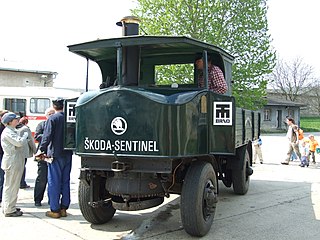
The Sentinel boiler was a design of vertical boiler, fitted to the numerous steam wagons built by the Sentinel Waggon Works.

A launch-type, gunboat or horizontal multitubular boiler is a form of small steam boiler. It consists of a cylindrical horizontal shell with a cylindrical furnace and fire-tubes within this.

A haycock boiler is an early form of steam locomotive boiler with a prominently raised firebox of "Gothic arch", "haystack", or "coppernob" shape. The term haystack is most commonly used, but is avoided here as it is confusingly used for three quite different forms of boiler. This particularly large outer firebox served as the steam dome and was often highly decorated with polished brass. These were popular for early railway locomotives, from 1840 to the 1850s.

The South African Railways Class 16E 4-6-2 of 1935 is a class of passenger steam locomotive.
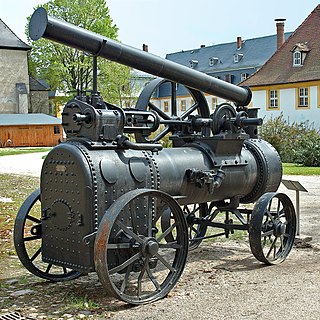
A round-topped boiler is a type of boiler used for some designs of steam locomotive and portable engine. It was an early form of locomotive boiler, although continuing to be used for new locomotives through to the end of steam locomotive manufacture in the 1960s.
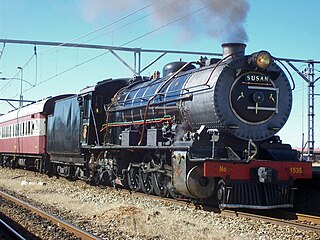
The South African Railways Class 12A 4-8-2 of 1919 was a steam locomotive.
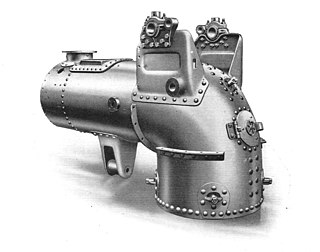
A pistol boiler is a design of steam boiler used in light steam tractors and overtype steam wagons. It is noted for the unusual shape of the firebox, a circular design intended to be self-supporting without the use of firebox stays.

The GER Class T77 was a class of twenty-five 0-6-0 steam locomotives designed by A. J. Hill for the Great Eastern Railway. They all passed to the London and North Eastern Railway at the 1923 grouping and received the classification J19.
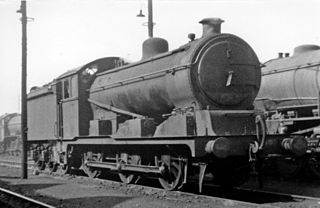
The GER Class D81 was a class of twenty-five 0-6-0 steam locomotives designed by A. J. Hill for the Great Eastern Railway. The all passed to the London and North Eastern Railway at the 1923 grouping and received the classification J20.
The L&YR 2-10-0 was a prospective design for a class of 2-10-0 steam locomotives on the Lancashire and Yorkshire Railway. Initial designs were made by George Hughes between 1913 and 1914, but none of the class were built. If they had been, these would have been the UK's first 10-coupled locomotives in regular service.

























